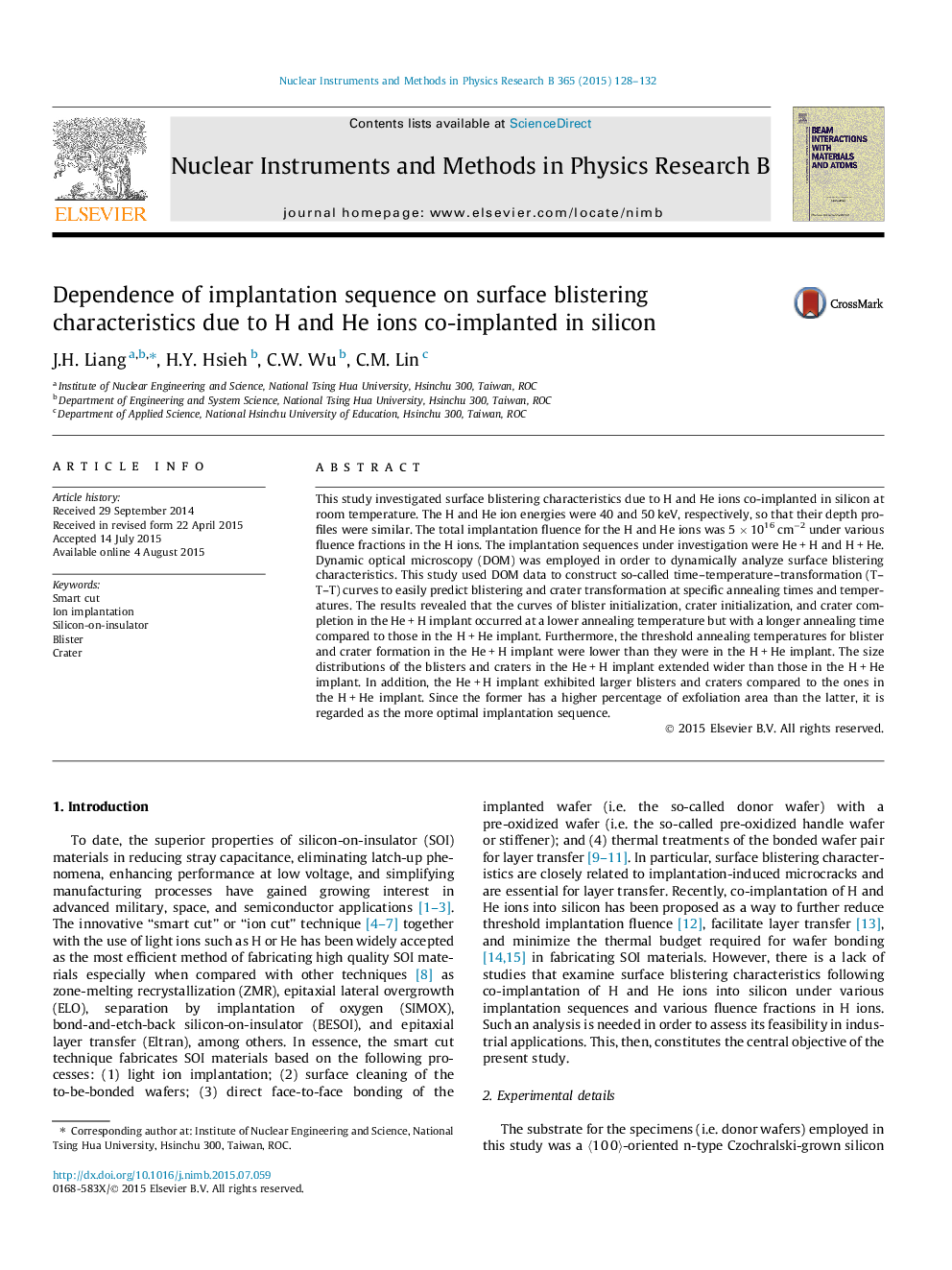| Article ID | Journal | Published Year | Pages | File Type |
|---|---|---|---|---|
| 1682397 | Nuclear Instruments and Methods in Physics Research Section B: Beam Interactions with Materials and Atoms | 2015 | 5 Pages |
This study investigated surface blistering characteristics due to H and He ions co-implanted in silicon at room temperature. The H and He ion energies were 40 and 50 keV, respectively, so that their depth profiles were similar. The total implantation fluence for the H and He ions was 5 × 1016 cm−2 under various fluence fractions in the H ions. The implantation sequences under investigation were He + H and H + He. Dynamic optical microscopy (DOM) was employed in order to dynamically analyze surface blistering characteristics. This study used DOM data to construct so-called time–temperature–transformation (T–T–T) curves to easily predict blistering and crater transformation at specific annealing times and temperatures. The results revealed that the curves of blister initialization, crater initialization, and crater completion in the He + H implant occurred at a lower annealing temperature but with a longer annealing time compared to those in the H + He implant. Furthermore, the threshold annealing temperatures for blister and crater formation in the He + H implant were lower than they were in the H + He implant. The size distributions of the blisters and craters in the He + H implant extended wider than those in the H + He implant. In addition, the He + H implant exhibited larger blisters and craters compared to the ones in the H + He implant. Since the former has a higher percentage of exfoliation area than the latter, it is regarded as the more optimal implantation sequence.
